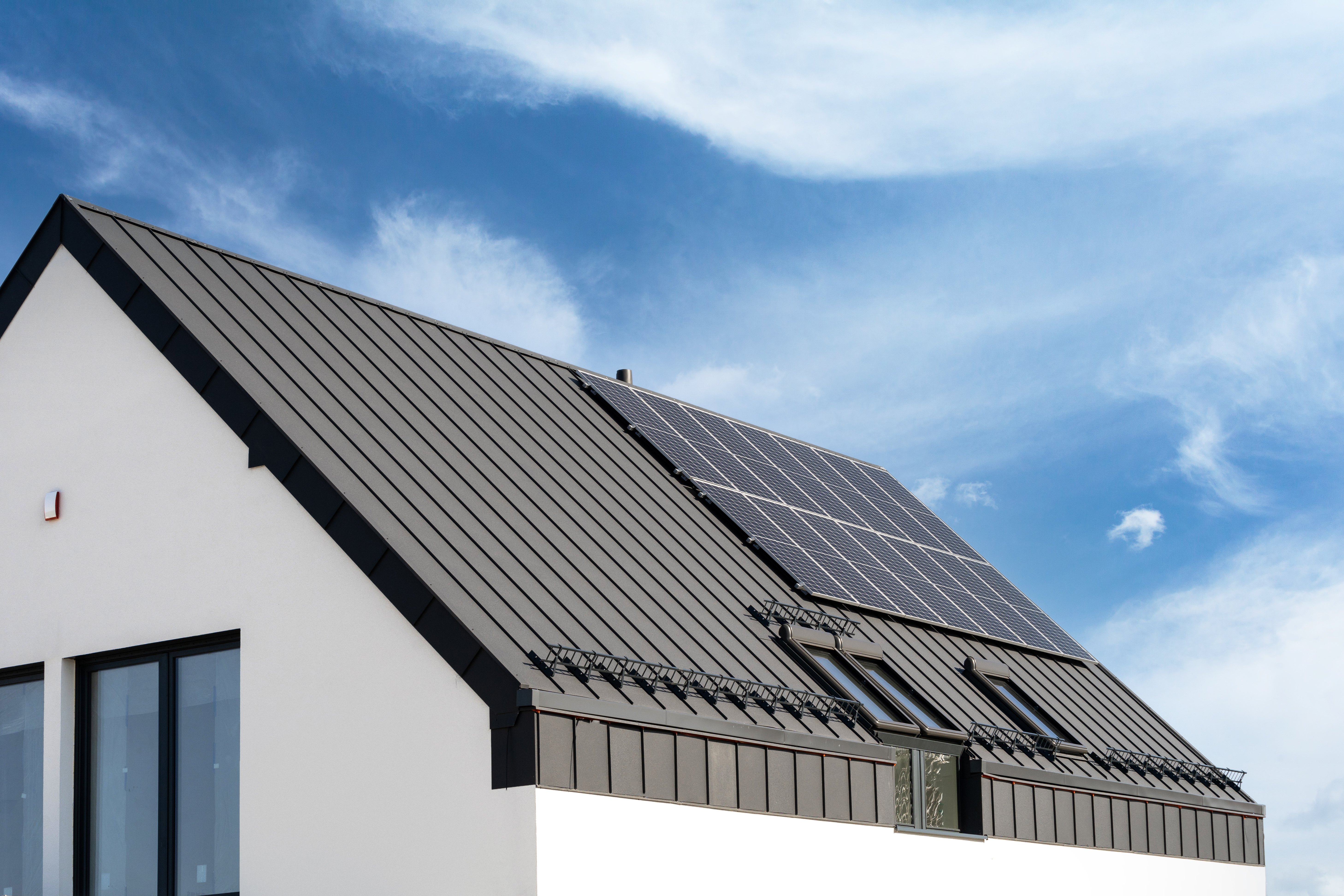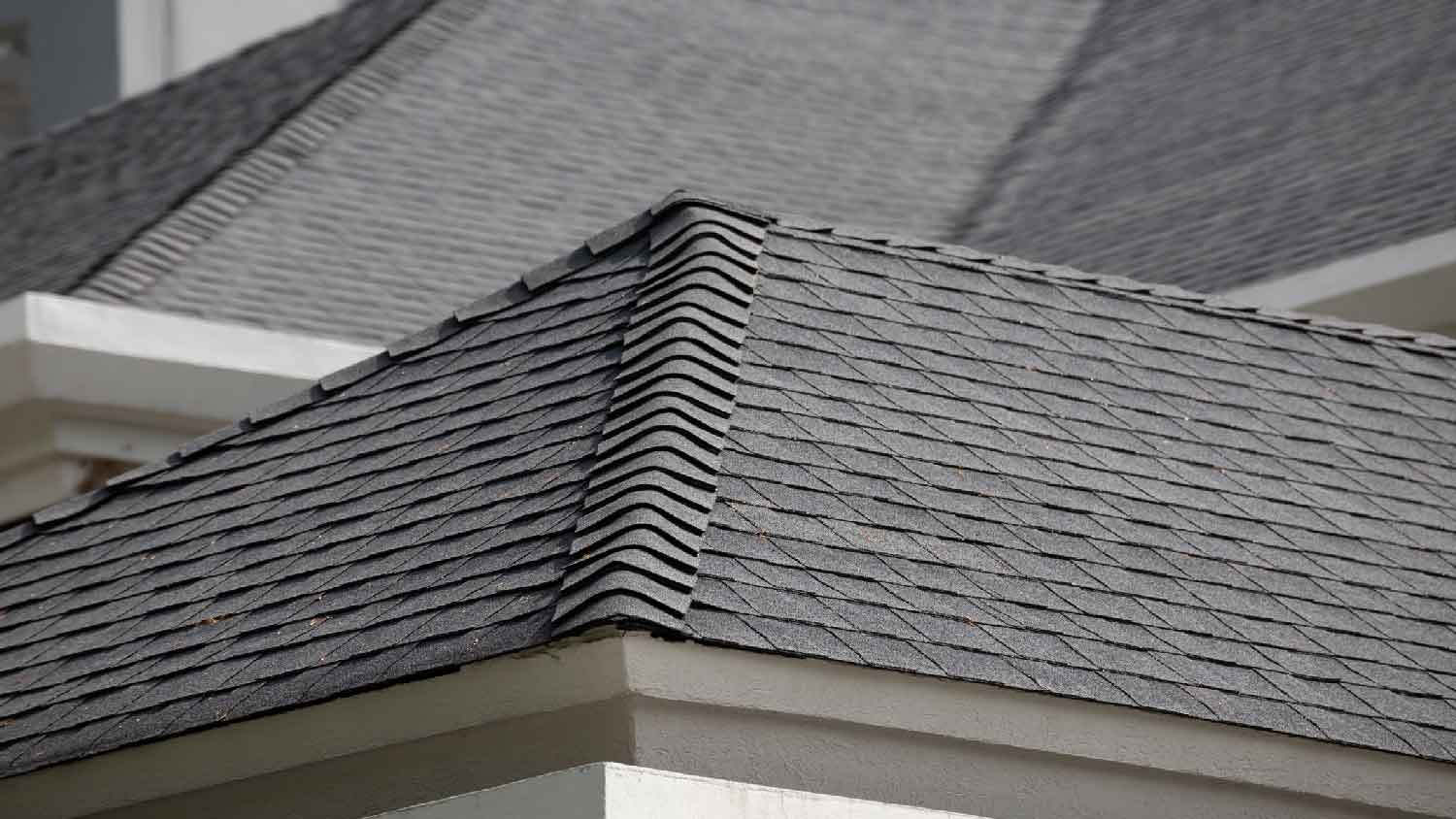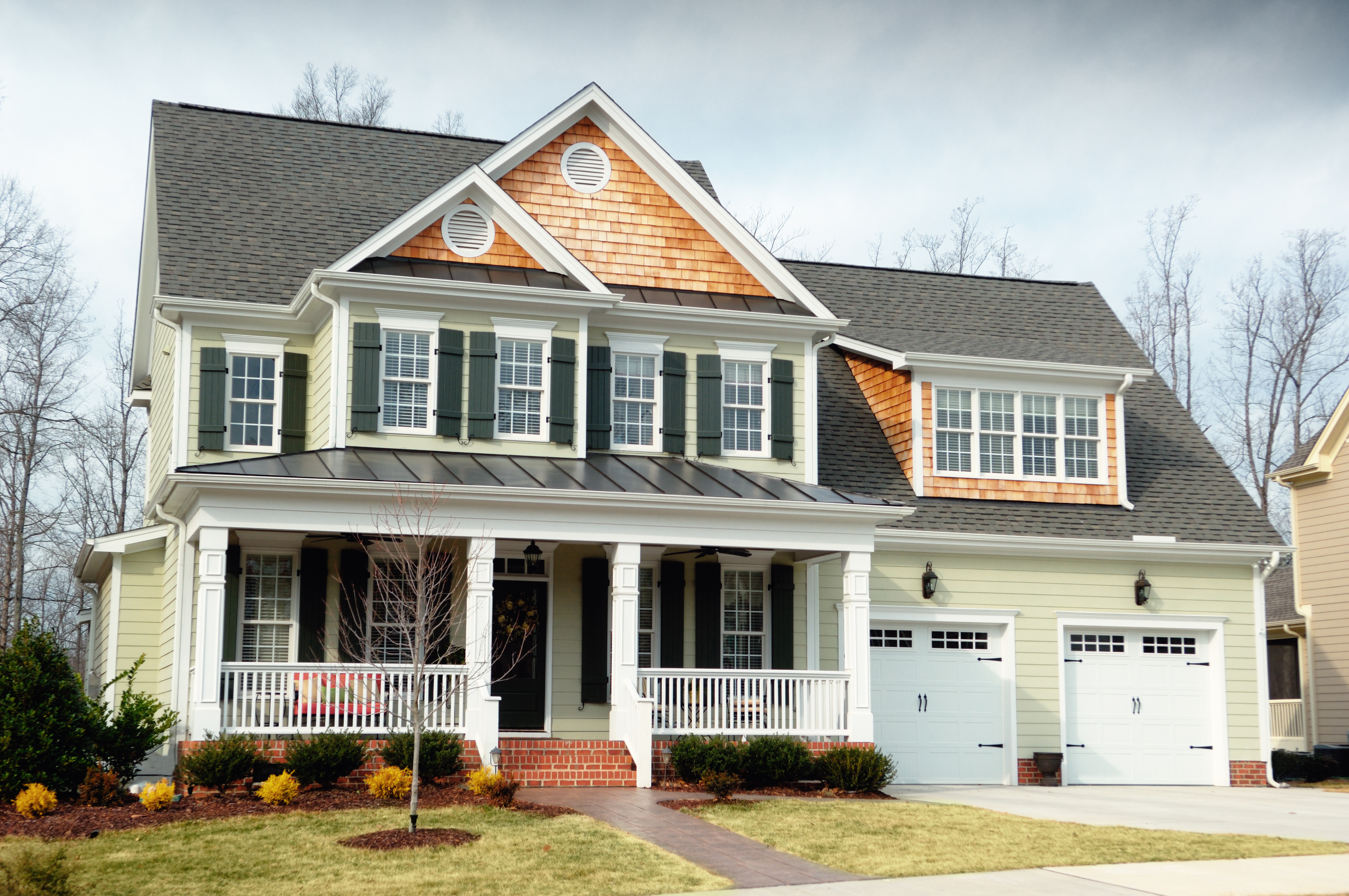
A metal roof can defend your home against Ohio’s varying weather conditions. Learn how much a metal roof costs in Columbus, OH.
Could a light-colored roof boost the energy efficiency of your home?


Whites, beiges, and tans tend to be the most energy-efficient roof colors.
If you live in a warm climate, avoid dark-colored roofing.
Metal roofing and cedar shakes are some of the most energy-efficient materials.
You may not want a cool roof if you live in a cold climate.
An energy-efficient home has many benefits. You’re likely to experience high and low temperatures more comfortably, save money on utilities, and have a higher resale value than similar, non-efficient homes—and the color of your roof is a big part of the equation. So, what color roof is the most energy efficient, and how much does color really matter?
It turns out that while a light-colored roof is slightly more energy-efficient than a darker-colored roof, other factors play a much bigger role in energy efficiency. Key factors to consider when thinking about your roof’s energy efficiency include reflectivity, roofing materials, coating, ventilation, and insulation.
The short answer is that white is the most energy-efficient roof shingle color. According to the U.S. Department of Energy, it reflects 60% to 90% of sunlight. This helps stop heat from the sun from seeping into your attic and upper stories. Though white has the highest reflectivity rating, light-colored roofing still comes with energy-efficient benefits compared to other colors.
All in all, the most energy-efficient colors of shingles for roofs include:
Whites
Beiges
Tans
These tend to reflect more heat than blues, greens, and grays. Keep in mind materials also matter. It’s essential to look at the overall reflectivity rating of your roof. In general, roofs with higher reflectivity ratings (over 65%) are better at reflecting the sun’s rays and keeping your home cool during warmer months. While you won’t be able to check your roof’s reflectivity rating on your own, a local roofing professional will be able to give you the information you need.

Roofing can be made from a variety of materials, each of which will create more or less energy-efficient conditions. Popular roofing materials that can boost energy efficiency include metal, composite, and some asphalt options.
Metal roofs have a high reflectivity rating and naturally dissipate heat. Researchers with the U.S. Department of Energy calculate that metallic roofs as either shingles or panels can lower your air conditioning costs by up to 25%. While the exact numbers are tough to run, in general, lighter-colored metal roofs are more energy-efficient than darker-colored metal roofs.
Composite roofing, which is roofing made of recycled materials and often designed to look like slate roofing, often comes in energy-efficient varieties. When considering composite roofing, choosing a lighter roof shingle color will give you more bang for your energy-efficiency buck.
Around 75% of homes across the United States have asphalt shingles on their roof. While this popular roofing material is durable and affordable, its energy efficiency varies greatly.
Homeowners who have high-quality, energy-efficient asphalt shingles can usually see a notable difference in their home energy bills. So, too, can homeowners who switch from darker-colored shingles to lighter asphalt roof colors.
Though cedar shake roofs aren’t as common as asphalt or composite roofing, this material is actually a great choice if you have efficiency in mind. Cedar is a natural insulator—some say it’s up to two times more efficient than asphalt. On top of the energy savings, cedar is a sustainable choice since wood is a natural, biodegradable material.
If you want to boost your roof’s energy efficiency, using roof coating or paint can help. Some roof coatings will make the roof a lighter color, such as white, or use special reflective pigments that reflect the sunlight.
Others will provide more solar heat reflectivity. This reflectivity can help with energy savings in warm weather and especially during summer months.
Not all roofs are suited to coating or painting. You should not coat or paint your roof if:
Applying paint or coating will negatively affect or void your roof’s warranty
You have an asphalt roof (coating cannot be applied to asphalt)
Your roof already comes with a cool roof coating (like most metal roofs) and you notice no chipping or peeling
Your roof already comes with a cool roof coating (like most metal roofs) and you notice no chipping or peeling
If your roof is a good candidate for coating, your pro will probably use an elastomeric coating. This sort of coating is thick and provides waterproof protection in addition to heat and UV ray resistance. Elastomeric roof coating costs $0.15 to $0.75 per square foot and is a budget-friendly option.
If you’re planning to take your roof's energy efficiency up a notch, you’ll want to be sure that any roof products, such as tiles, shingles, or roof coatings, are Energy Star rated.
Energy Star-rated products are guaranteed to meet minimum solar reflectance values, which lower your peak cooling demand by 10% to 15% and will help you save on your energy bill.
While it’s always a good idea to ramp up your efficiency overall, in some situations, energy-efficient roofing may not be worth the cost. Homeowners in cooler climates with short and mild summers may not benefit from a cool roof (a roof with a high-reflectivity rating). In fact, it can actually increase energy costs. Instead, you might find more value in adding insulation to help your home retain heat during colder winters.
Remember that the average roof replacement costs more than $9,000. Unless you already need a roof replacement, going for an energy-efficient roof coating is usually more cost-effective.
There are all sorts of factors that impact the overall value of your home. While you can’t determine the ROI of a personal preference, roof color can impact curb appeal. If you choose an unpopular color, you can expect curb appeal to shrink for some buyers.
That said, research has shown that it’s less about color and more about coordination. According to Roofing Magazine, 91% of real estate pros agreed that a color-coordinated exterior increases home value. Again, the ROI is up for debate.
To keep it safe, take a look around your neighborhood. Note the nearby roof colors, and choose something that seamlessly fits in with your neighbors' homes.
Energy efficiency is important, but you’ll need to pick a roofing material that fits your other criteria as well, such as cost, quality, and durability. You also want to pick a roof color that matches the style of your home and your personal preferences.
As you weigh your options, you might appreciate professional guidance about your priorities and options. A roofing pro can evaluate and talk with you about how to create a roof that is as stylish, functional, and as energy-efficient as possible.
Meg Scanlon contributed to this piece.
From average costs to expert advice, get all the answers you need to get your job done.

A metal roof can defend your home against Ohio’s varying weather conditions. Learn how much a metal roof costs in Columbus, OH.

Dealing with a visibly damaged roof or leak? Learn about roof repair costs in Columbus to see how much you’ll need to budget for a permanent solution.

Learn about roof replacement costs in Columbus and what factors are at play to budget accurately and make sure you’re getting a fair price.

Follow these four straightforward steps to install hurricane ties. The number of ties and the demand load will impact the project.

Painting a metal roof helps it look great and last for decades. Use this guide to learn how to paint a metal roof, whether you DIY the job or hire a pro.

A bad roofing job can compromise the safety of your house. Learn the signs of a bad roofing job so you can nip issues in the bud.